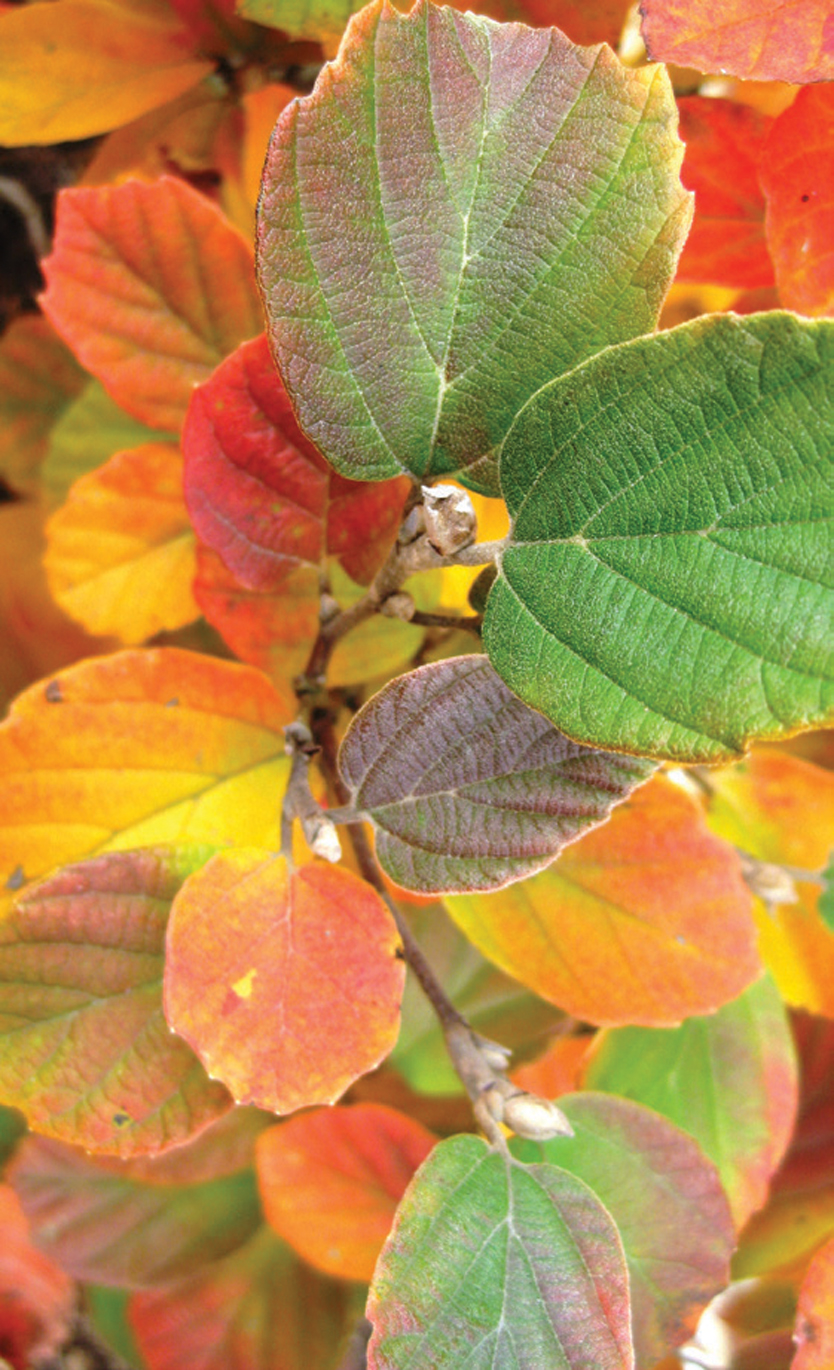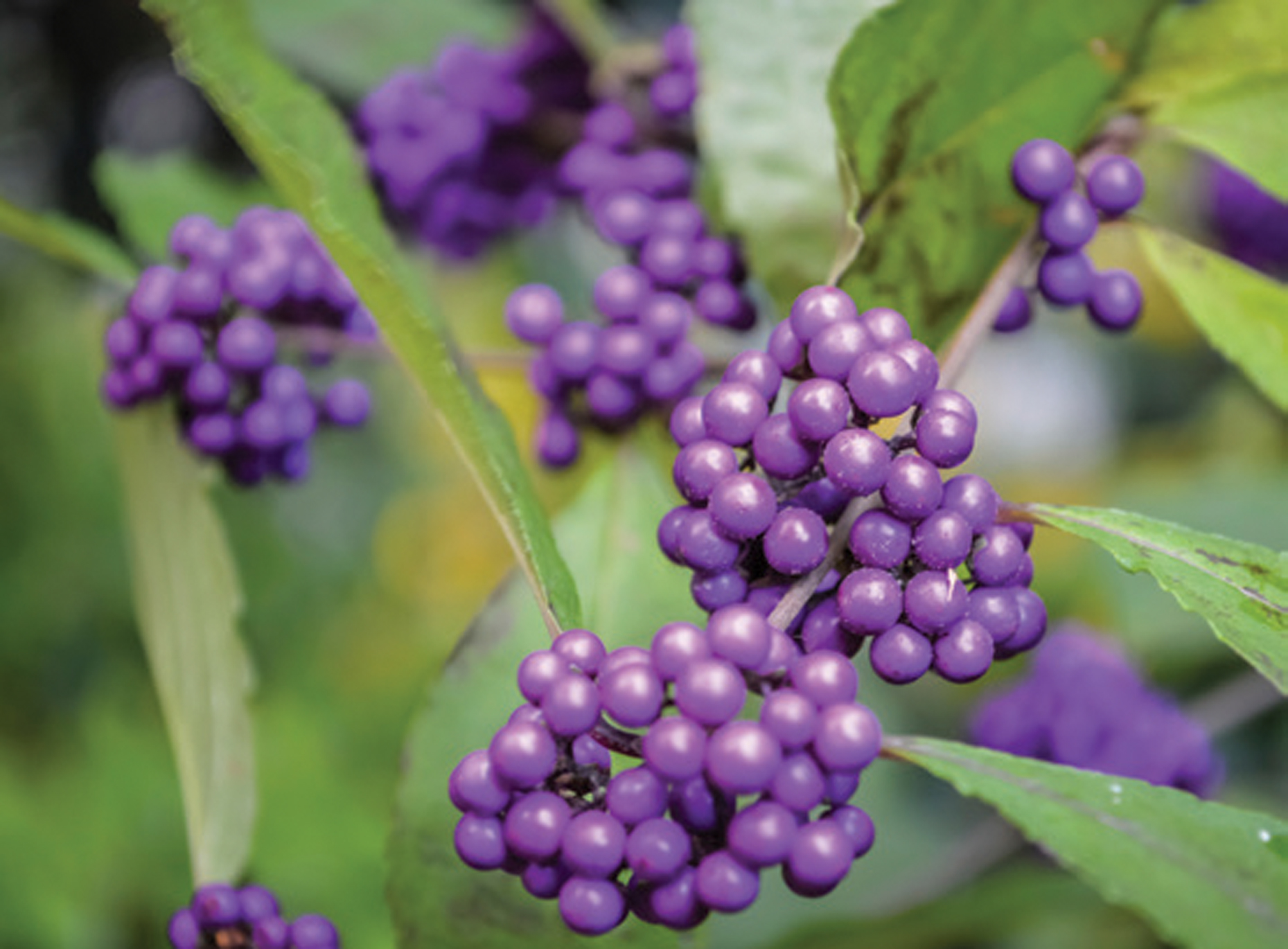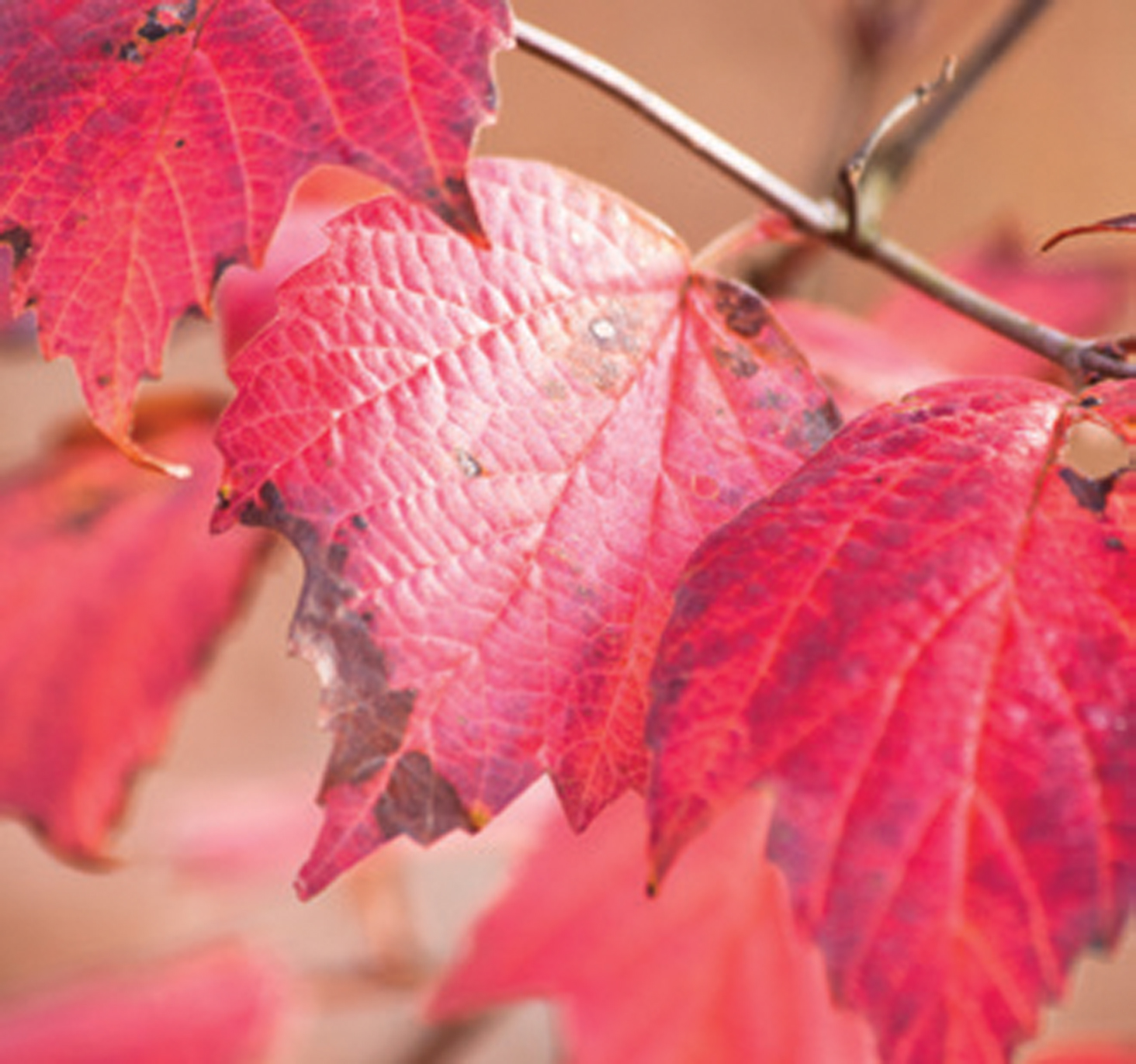Spectacular Shrubs for Fall: Bloom in Spring, Color in Fall


It would seem most gardeners plant with spring and summer blooms in mind, overlooking fall colors, particularly when it comes to shrubs. Don’t let bloom time steal all the attention; there are a number of options that typically offer, in addition to seasonal blooms, glorious fall color as well as texture and other interest all year long.
Among these options is the oakleaf hydrangea. Native to the Southeastern United States, the oakleaf hydrangea is sun and drought tolerant, resistant to deer, insects and diseases, and it’s cold hardy, too—making it an ideal shrub. Named for their foliage’s resemblance to larger oak leaves, oakleaf hydrangeas have both large leaves (up to 12 inches long!) and large, showy white blooms that begin to bloom in late spring. While they do make excellent cut flowers, they also last indefinitely on the bush, turning shades of pink and brown as they mature. Oakleaf hydrangeas make excellent dried flowers, and will do so while still on the plant as they age. Come fall, the leaves turn beautiful shades of red, bronze and burgundy, before dropping off to reveal a peeling bark that highlights a dark brown layer underneath. This peeling is a normal for oakleaf hydrangeas, adding interest and texture to the winter landscape. The oakleaf hydrangea does well in full sunlight, but as an understory shrub, a bit of shade during the hot afternoon sun is preferable. When planting oakleaf hydrangeas, keep in mind they can grow up to 10 feet tall with a spread of 8 feet, so be sure to give them enough space to fill out. They bloom on the prior year’s growth, so if you must prune them, do so after they bloom, giving them enough time to grow new buds for next season’s glory.
Fothergilla, sometimes known as witch alder, is another Southeastern United States native, and a relative of witch hazel. As a native, it is a low-maintenance shrub that is basically pest and disease free. Low growing, fothergilla has fragrant brush-like blooms in early spring before leafing out in shades of blue-ish-green. Come fall, the fothergilla takes on hues that range from golden yellows, bright oranges and intense reds. Once the leaves are shed, their zig zag branches stand out, continuing to create interest throughout the winter. Fothergillas prefer full sun, but can take some shade. There are several varieties, including a dwarf, so their size can range from 3 to 10 feet.
With over 150 species of viburnum, many of which are native, it can be hard to choose just one. In general, viburnum have lovely, often-fragrant spring blooms and attractive foliage that offers a variety of brilliant shades of reds, pinks, yellows and oranges in the fall while also sporting colorful fruits that attract birds and other wildlife. Many types of viburnum can dapt to various growing conditions, and while they do best in full sun, they’ll also take partial shade. Among the varieties that do well in this area are the arrowwood, nannyberry and mapleleaf. All three boast white flowers in the spring (with the mapleleaf veering towards yellow), fall fruit in shades of green to red to blue-black, and spectacular fall colors specific to their particular varietal. The mapleleaf, pink to deep purple in the fall, can grow up to 6 feet tall and 4 feet wide, while the arrowwood with its yellow to orange fall foliage can grow to a height of 10 feet tall and wide. Nannyberries, which can be maintained as small trees, can grow up to 15 feet tall and sport shades of burgundy come fall, offsetting its dark blue berries.

Beautyberries are another shrub native to the area, sometimes known as serviceberries. They bring color and texture to the fall garden with their small purple berries that hang on the plant well into the winter. The berries are edible, attracting birds to your yard, and can be used to make jam similar in flavor to elderberry. Native Americans were known to dry the berries to make tea to treat illnesses, and the oil in the leaves can be used as an insect repellent. In the spring, the beautyberry has small lavender-pink lilac-type flowers and in addition to their purple fall berries, their foliage turns yellow, creating a striking look. Beautyberries prefer light shade and grow to be about 4 to 8 feet tall and wide. They make a terrific informal hedge or planted under tall shade trees for a natural woodland-looking area.
If the idea of edible landscaping appeals to you, why not plant blueberry bushes? They offer lovely bell-shaped blooms in the early spring, delicious berries in the late spring to early summer, and brilliantly colored foliage in the fall, in shades of red, orange and yellow. All varieties—Northern, Southern, as well as rabbiteye, a Southeastern native bush—do well in our region, so why not try a few varieties for a harvest that stretches the length of blueberry season? Blueberries prefer full sun, but can take some shade. They also prefer acidic soil, so soil amendment is generally necessary when planting blueberries. Blueberries take a few years to get established, but once established, they are incredibly low maintenance while offering much to your garden. Depending on the variety, they can grow from 4 to 8 feet tall. It is worth noting that blueberries are extremely popular with wildlife, so some sort of netting is advised if you would like to keep the bulk of your bounty.
 Fall is a terrific time to plant, particularly shrubs and trees. With the ground still relatively warm while air temperatures are dropping, fall planting gives roots more time to establish themselves before winter sets in. Cooler air temperatures mean less insects, less disease and less watering too. Fertilizer, which promotes new growth that can be nipped by winter weather, isn’t necessary when planting this time of year. With the weather a bit more predictable in the fall than the spring, there is far more opportunity to plant than there is during some of those intense cold spells we can see far beyond the date when we want to deal with them in the spring. Best of all, fall is when garden centers are trying to sell off their inventory, making it bargain time for sprucing up your yard. As you take a look around your yard and consider adding color for this time of year, why not go ahead and plant something that a year from now will completely change up the look of your garden? You’ll be glad you did.
Fall is a terrific time to plant, particularly shrubs and trees. With the ground still relatively warm while air temperatures are dropping, fall planting gives roots more time to establish themselves before winter sets in. Cooler air temperatures mean less insects, less disease and less watering too. Fertilizer, which promotes new growth that can be nipped by winter weather, isn’t necessary when planting this time of year. With the weather a bit more predictable in the fall than the spring, there is far more opportunity to plant than there is during some of those intense cold spells we can see far beyond the date when we want to deal with them in the spring. Best of all, fall is when garden centers are trying to sell off their inventory, making it bargain time for sprucing up your yard. As you take a look around your yard and consider adding color for this time of year, why not go ahead and plant something that a year from now will completely change up the look of your garden? You’ll be glad you did.
arrowwood, beautyberries, blueberry, fall planting, fall shrubs, Fothergilla, mapleleaf, nannyberry, oakleaf hydrangea, serviceberries, viburnum, witch alder, year-round plants






